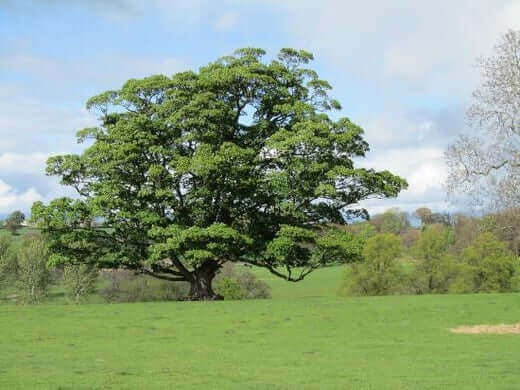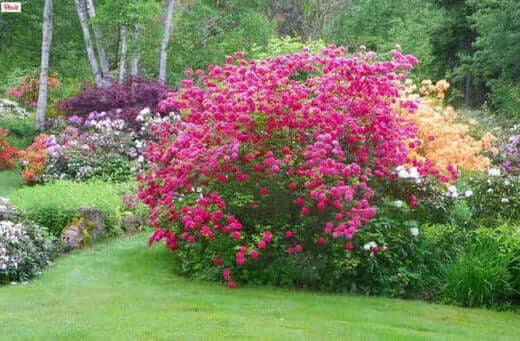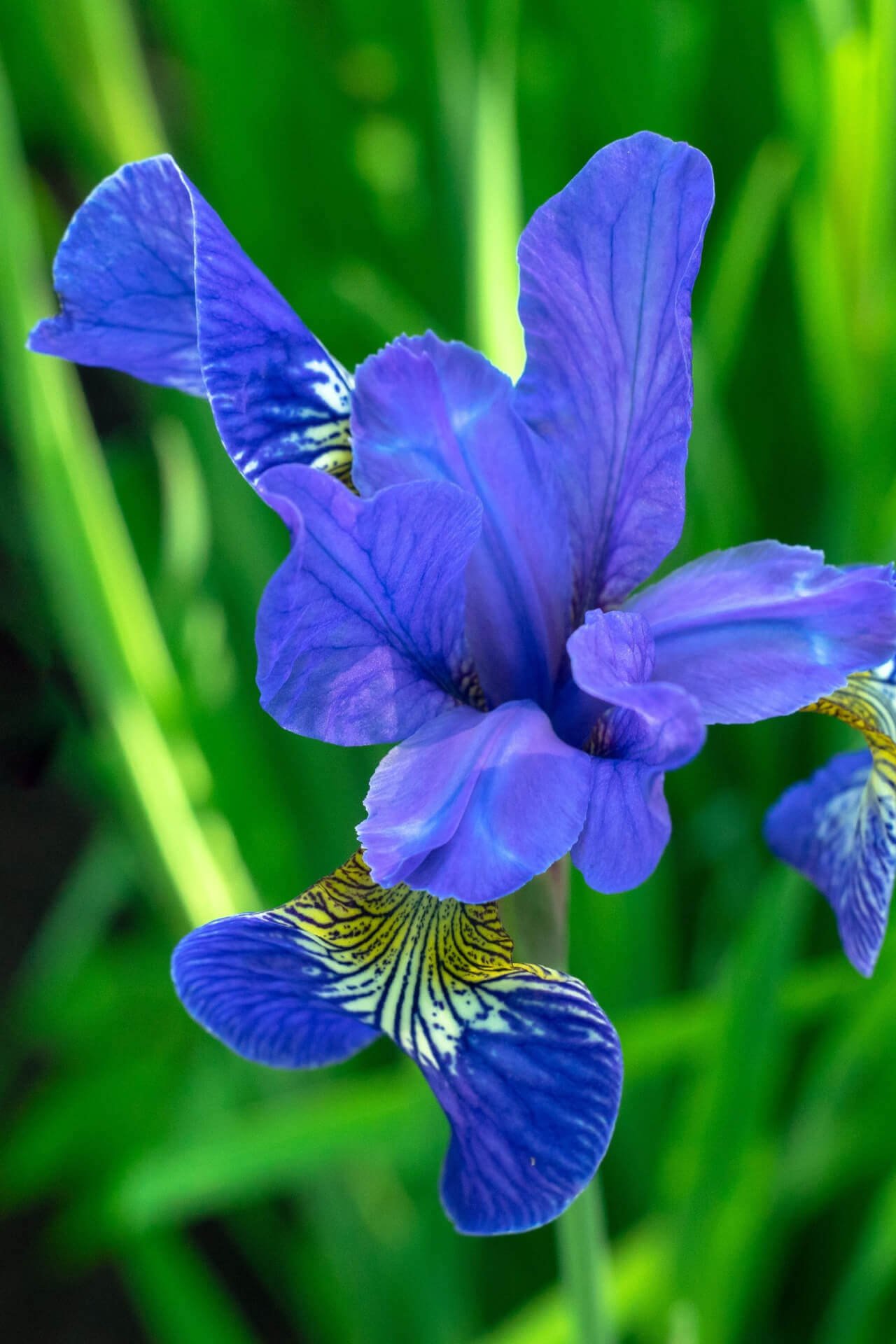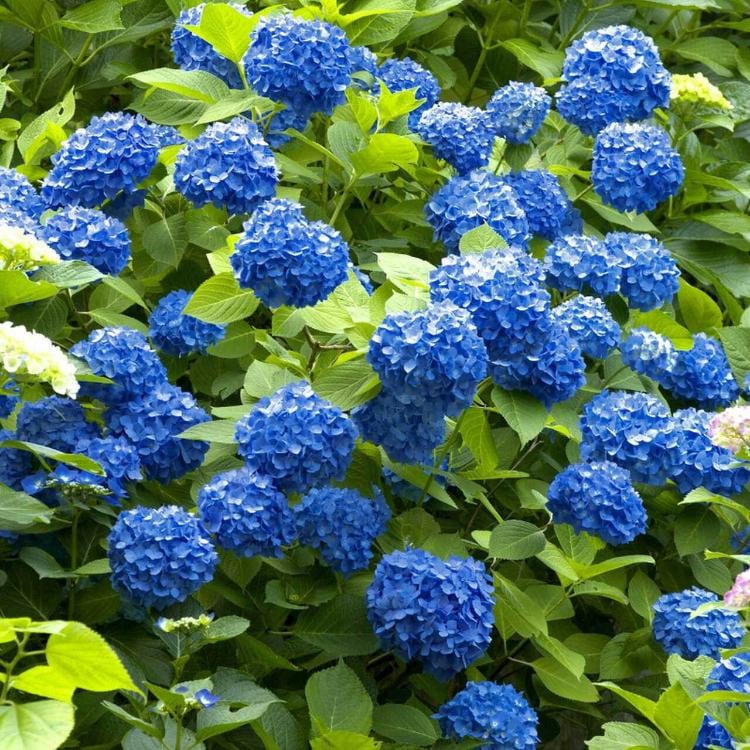Flowering Shrubs Enhances Landscaping
Flowering shrubs do indeed enhance the landscape. If they’re planted in suitable soil, climate and light, they can give years of enjoyment. Besides all sizes and shapes of flowers in all colors, many shrubs also have attractive foliage with different colors, mass, lines, and textures. Some things a property owner needs to keep in mind before they buy a shrub for the landscape are:
Where the Plant is Going to Be Placed
If a bush is planted beside the house, the owner will need to take its mature growth into account. The shrub shouldn't touch the wall when it's full-grown, and the center of the bush should be well beyond the edge of the eave. That will make sure that the plant gets plenty of water when it rains.
The owner should also take the ultimate size of the shrub into account when first planting them. If a particular bush is being planted as a hedge or a border, the spaces between the young plants can look empty till they fill out. In the meantime, the areas can be filled in by perennials or annuals.
The Health of the Shrub
Even if the shrub produces gorgeous blooms, the owner should steer clear of shrubs notorious for diseases and insect problems. The owner should ask a master gardener at the local garden center which bushes are the most disease resistant.

Once the owner has decided on flowering shrubs for their landscape, they can have fun mixing the different shrubs with other plants and flowers to create a beautiful and harmonious area in the garden. For example, hot pink azaleas would look good with an under-planting of bright, medium green ostrich ferns, feathery, cream-colored astilbe, and purple and white irises. White, red, pink, and yellow peonies might look good with blue hydrangea and an under-planting prostrate purple phlox.
Beautiful Planting Patterns for Flowering Shrubs
Flowering shrubs bring life to gardens with their vibrant colors and structural form while maintaining visual appeal throughout the year. When positioned in artistic planting designs, these shrubs can convert any ordinary outdoor area into a rich display of diverse colors and textures. Plant selection is critical to gardeners because they choose species with vibrant blossoms and attractive leaves. However, achieving an attractive shrub arrangement requires proper layout and balance combined with scale and seasonal changes. Considering these elements, you will create impressive plant formations that visually satisfy and flourish in their setting.
The initial step in developing planting patterns for flowering shrubs involves selecting a unifying theme or design style. A cottage garden style uses a relaxed design, featuring shrubs placed in free-flowing patterns alongside perennial and annual plants. The aim is to establish a multilayered floral arrangement that produces sequential flowering phases from early spring to late autumn. To achieve a modern aesthetic, choose minimalist shrub designs with clean lines and shapes that repeat the same plant type for a dramatic impact. Personal preferences, home style, landscape architecture requirements, and practical elements like sunlight exposure and soil quality determine the optimum garden layout.
Color is another key factor. A carefully selected color palette creates unity in the garden and highlights the best flowering period of each shrub. Gardeners who enjoy pastel colors use pale pinks, soft blues, and gentle lavenders to create a tranquil, romantic ambiance in their garden spaces. Some gardeners choose vibrant opposing color combinations, such as bright yellows alongside deep purples or oranges. Your shrub arrangement should create harmonious or contrasting effects between adjacent plant colors. Arrange purple shrubs such as Buddleia davidii (butterfly bush) alongside potentilla with golden flowers to maximize the visual impact of both colors. A garden display featuring multiple plants of a single color, such as numerous pink shrubs, creates a dramatic effect when paired with neutral foliage plants like variegated shrubs or silver-leaved subshrubs.
When planning your garden design, you should also evaluate the shape and form of each shrub. Plant arrangement depends on the height and spread of plants because these factors support orderly layouts and maintain visual balance. Place taller shrubs at the back of a bed or garden corners and position lower-growing shrubs in the front areas when dealing with limited space. Upright conical shrubs like lilac and viburnum varieties add vertical structure, while rounded mounded shrubs like spirea create soft edges and fill voids. A consistent pattern of shapes, like five or three round shrubs lined up, creates rhythmic cohesion throughout the garden design. Creating visual interest through contrast and depth involves combining different shrub shapes by pairing tall upright shrubs with cascading or arching shrubs.
The bloom periods of each shrub hold equal importance to their physical forms. Choosing shrubs that bloom at different times throughout the year will create continuous color from spring through autumn. Forsythia and azaleas bloom in early spring to announce the season, and hydrangeas, roses, and butterfly bushes maintain summer color, followed by ornamental berries and fall-blooming camellias that provide late-season splashes of color. Including shrubs that showcase visual appeal with colorful bark, attractive berries, or fiery autumn foliage adds multiple layers of attractiveness to a garden. This gardening method ensures the garden stays attractive when some shrubs are not flowering.
Planting multiple instances of one shrub species together creates "mass planting," which works best for shrubs with abundant flowers like hydrangeas or spireas because the extensive color displays become highly impressive. To maintain visual interest, it is essential to integrate contrasting shapes or textures within plantings to avoid a repetitive look, which can be achieved by placing small clusters of ornamental grasses among continuous shrub areas.
Planting shrubs with matching foliage textures enables gardeners to achieve continuous structural interest and colorful displays throughout the year. A backdrop of dark green glossy-leaved shrubs such as rhododendrons or hollies provides a striking setting for smaller shrubs with variegated foliage like Euonymus. The combination of various leaf textures and colors provides a multilayered visual effect that stays dynamic beyond the blooming period.
Consider practical elements that will determine your garden's lasting appeal and vitality. Adequate spacing is key: New shrubs may appear sparse when first planted but will develop and expand throughout their growth. Different pruners apply to various species, so you must match each shrub's maintenance needs with its specific placement and role in your garden. Organize your shrubs based on their ordinary light and water needs. Organizing plants based on similar needs reduces maintenance while providing every plant with optimal growing conditions.
Designing attractive planting patterns for flowering shrubs combines principles of color theory with shape considerations, proportional balance, and seasonal diversity. Whether your design preference is for romantic cottage gardens or modern minimalism, prioritize how shrubs naturally display their bloom timing, color, form, and texture to create a stunning and thriving landscape. Selecting and positioning your flowering shrubs correctly allows you to convert your garden into a striking sanctuary that offers continuous visual appeal while supporting pollinators and ensuring perpetual pleasure for you and visitors.
Read more

White Oak Trees Make An Excellent, Stable Shade Tree Even though the white oak tree starts on a slow slide, it makes up for it with its longevity. The tree can easily live for 60o years. It can ...

Beautiful Sweet William Plants The plant, Sweet William, is well-regarded throughout the continent of North America. It is a low- maintenance type of plant and is very hardy. The preceding statem...






